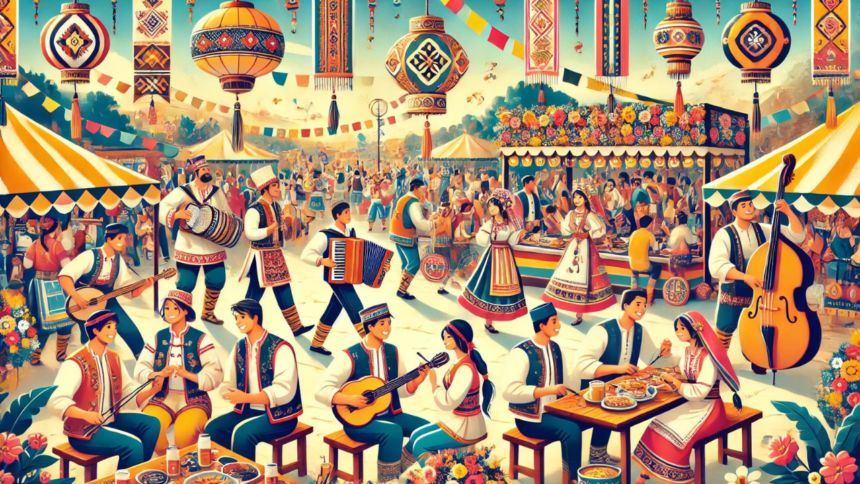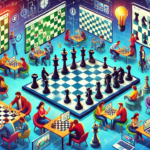The term đeman encapsulates a world of meanings, each intertwined with cultural significance and social dynamics. This comprehensive exploration delves into the roots, evolution, and multifaceted nature of đeman, unveiling its importance across various cultures and its impact on modern society.
The Roots of Đeman
Tracing back to ancient traditions, đeman historically symbolizes unity and community. Originating from rituals emphasizing togetherness, the term has evolved, adapting to different cultures’ changing social dynamics and values for centuries. Each iteration of đeman carries a piece of its historical context, making it a rich subject for cultural and historical studies.
Cultural Significance Across Societies
Across the globe, đeman is celebrated in myriad ways, reflecting the diversity of the cultures that embrace it. In some cultures, it marks significant communal celebrations, often tied to critical events in the agricultural calendar or essential historical milestones. In others, it’s a quieter, more reflective practice, emphasizing personal connections and familial bonds.
These celebrations display cultural richness and reinforce social bonds within the community. Whether through elaborate festivals or simple family gatherings, đeman acts as a catalyst for strengthening community ties and fostering a shared sense of identity.
Đeman in Modern Times
With globalization and digital communication, đeman has transcended its traditional boundaries, morphing into a global and local symbol. Social media platforms have played an essential role in this evolution, allowing people from different cultures to share their unique celebrations of đeman, thus fostering a greater understanding and appreciation of this cultural phenomenon.
Modern interpretations of đeman often blend traditional elements with contemporary influences, creating a vibrant fusion that appeals to today’s global audience. This adaptability highlights the resilience and enduring relevance of đeman in the cultural expressions of societies worldwide.
Artistic and Social Expressions of Đeman
Đeman influences various art forms, including music, dance, and visual arts, each adding depth and meaning to this cultural emblem. Musicians and dancers often draw inspiration from the themes of unity and community central to đeman, while artists depict these themes visually in various mediums.
In literature and film, đeman is frequently explored in themes related to community life, resilience, and cultural identity. These works contribute to a broader dialogue about the role of tradition in modern society, examining how artistic practices can bridge the past and the present.
Challenges and Controversies
Despite its widespread acceptance and celebration, đeman is not without its controversies. The globalization of đeman has sparked debates about cultural appropriation and the dilution of its original meanings. As đeman becomes more popular worldwide, there is a growing concern about maintaining its authenticity and respecting its artistic roots.
Moreover, the commercialization of đeman-related festivities has raised questions about the balance between cultural celebration and exploitation. These discussions are crucial as they influence how đeman will be preserved and cherished by future generations.
Conclusion
Đeman stands as a testament to the power of cultural expression and its ability to unify people across different backgrounds. As we continue to explore and celebrate đeman, it is essential to do so with sensitivity and respect for its deep cultural roots and the diverse meanings it holds for people worldwide.
FAQs about Đeman
What is đeman?
Đeman is a cultural term that encompasses a variety of meanings related to community, unity, and celebration across various cultures. It is deeply embedded in social customs and artistic expressions, often associated with festivals, music, and dance.
Why is đeman important in cultural studies?
Đeman represents a significant aspect of cultural heritage, reflecting different communities’ social dynamics, traditions, and values. It provides a window into how cultures express their identity through celebrations and communal gatherings, making it a crucial subject in cultural studies.
How has đeman evolved?
Ori, Initially rooted in ancient rituals emphasizing unity and community, đeman has adapted through the ages, influenced by globalization, technology, and cultural exchanges. It now includes a broader array of expressions and is celebrated globally, maintaining its core themes and incorporating modern elements.
What are the standard ways đeman is celebrated?
Đeman is celebrated in varied ways depending on the culture. It can involve large public festivals, intimate family gatherings, traditional music and dance performances, and modern digital expressions that transcend geographical boundaries.
Can đeman be found in modern arts and media?
Yes, đeman continues to influence contemporary arts and media, inspiring themes in music, dance, film, and literature. Artists and creators draw from its rich cultural essence to produce works that reflect traditional values and modern societal issues.






